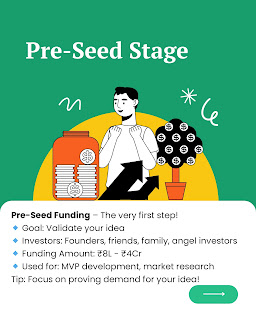Every successful startup begins with a powerful idea — but turning that idea into a scalable and sustainable business takes more than just vision and passion. It takes funding — and lots of strategic decision-making at each stage of the journey.
From the earliest pre-seed round to a full-scale IPO, understanding how startup funding works is crucial for founders, investors, and even curious learners.
Let’s break down the key startup funding stages every aspiring entrepreneur should know:
✅ 1. Pre-Seed Stage
At this stage, the goal is to validate the idea — often through a prototype or proof of concept.
-
Funding Source: Self-funded (bootstrapping), friends, family
-
Typical Investment Range: ₹8 lakhs – ₹4 crores
-
Use of Funds: Idea validation, basic research, early team building
✅ 2. Seed Stage
Here, startups begin building a real product, testing the market, and preparing for early growth.
-
Funding Source: Angel investors, seed funds, early-stage VCs
-
Typical Investment Range: ₹4 crores – ₹16 crores
-
Use of Funds: Product development, customer acquisition, early marketing
✅ 3. Series A
This is where traction begins. Startups now focus on scaling operations and growing their user base.
-
Funding Source: Venture Capital firms
-
Typical Investment Range: ₹16 crores – ₹120 crores
-
Use of Funds: Market expansion, hiring key talent, infrastructure setup
✅ 4. Series B and Beyond
Companies are now focused on major expansion, profitability, and preparing for an IPO.
-
Funding Source: Larger VCs, Private Equity firms, strategic investors
-
Typical Investment Range: ₹120 crores+
-
Use of Funds: Scaling globally, acquisitions, preparing for public offering
📊 Which stage is your startup currently in?
Whether you're just brainstorming or already pitching to VCs, understanding these stages can help you better plan your fundraising strategy.
📩 Stay Connected!
Follow this blog for more tips on entrepreneurship, fundraising, and growth strategies!
#StartupFunding #Fundraising #Entrepreneurship #Startups #VC #Growth




